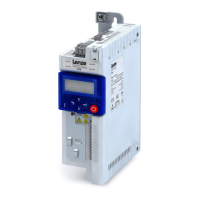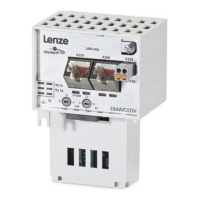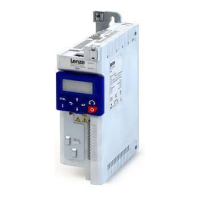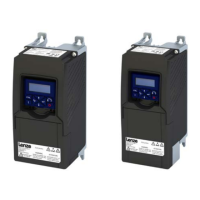7.3.5 Oscillaon damping
The oscillaon damping serves to r
educe the oscillaons during no-load operaon which are
caused by energy oscillang between the mechanical system (mass inera) and the electrical
system (DC bus). Furthermore, the oscillaon damping can also be used to compensate for
resonances.
Precondions
"V/f characterisc control (VFC open loop)" motor control has been selected in 0x2C00
(PAR 300). Otherwise the oscillaon damping is not eecve.
Restricons
Observe the following restricons:
•
Damping is possible only for constan
t oscillaons at a steady-state operang point.
•
Oscillaons occurring sporadically cannot be damped.
•
Oscillaon damping is not suitable for oscillaons occurring during dynamic processes (e.
g.
acceleraons or load changes).
•
Oscillaon damping is only acve if the setpoint speed is greater than 10 rpm and the DC-
bus voltage exceeds a value of 100 V.
Details
The determinaon of the oscillaon is based on the acve current. In order to obtain the
alternang component of the acve current, this current is dierenated. This signal is then
passed through a PT1 lter.
Idencaon of the oscillaon
Before the oscillaon damping funcon can be parameterised, the oscillaon has to be iden-
ed. One way to do this is to examine the motor current while oscillaon damping is switched
o (gain = 0 %). At steady-state operaon, a constant current ows. If the drive oscillates,
these oscillaons are also visible on the motor current. It is therefore possible to determine
the frequency and the amplitude of the oscillaon from the alternang component of the
motor current. In the following, this alternang component is referred to as "current oscilla-
on".
Parameter seng
The gain of the oscillaon signal is to be set according to the following equaon:
0x2B0A:001 (PAR 318/001) = current amplitude * 100 % / (Ö2 * ma
ximum device current)
The default me constant of the PT1 lter should be sucient for most applicaons. If
required, it is only possible to adapt the me constant via »EASY Starter«. Generally, the me
constant must be set so that the oscillaon can be dampened, but that higher-frequency com-
ponents are ltered from the signal. The me constant is determined from the reciprocal
value of the double current oscillaon frequency:
0x2B0A:002 (PAR 318/002) = 1 / (2 * oscillaon frequency)
Parameter Name / value range / [default seng] Info
0x2B0A:001
(PAR 318/001)
Oscillaon damping: Gain
(Oscillaon damping
: Oscillaon: gain)
-100 ... [20] ... 100 %
Gain of the oscillaon signal.
•
With the seng 0, oscillaon damping is deacvated.
0x2B0A:002
(PAR 318/002)
Oscillaon damping: Filter me
(Oscillaon damping: Oscillaon: me)
1 ... [5] ... 600 ms
Time constant of the PT1 lter.
0x2DDF:002 Axis informaon: Maximum current
•
Read only: x.xx A
•
Default seng depending on the size.
Display of the maximum current of the axis.
0x2D88
(PAR 104)
Actual motor current
(Act. motor current)
•
Read only: x.x A
Display des present current-r.m.s. value.
Motor control
Opmisaon of motor control
Oscillaon damping
88

